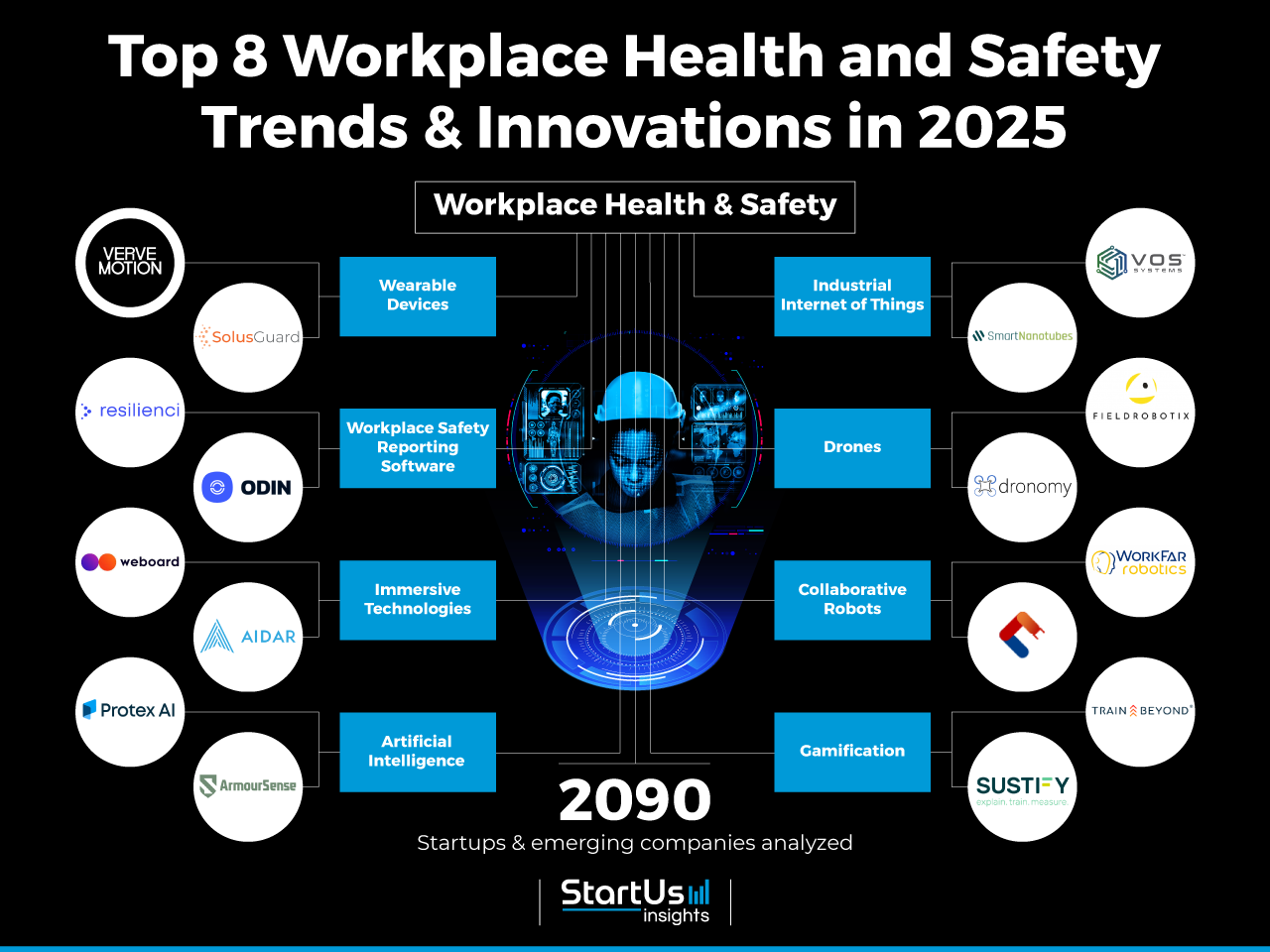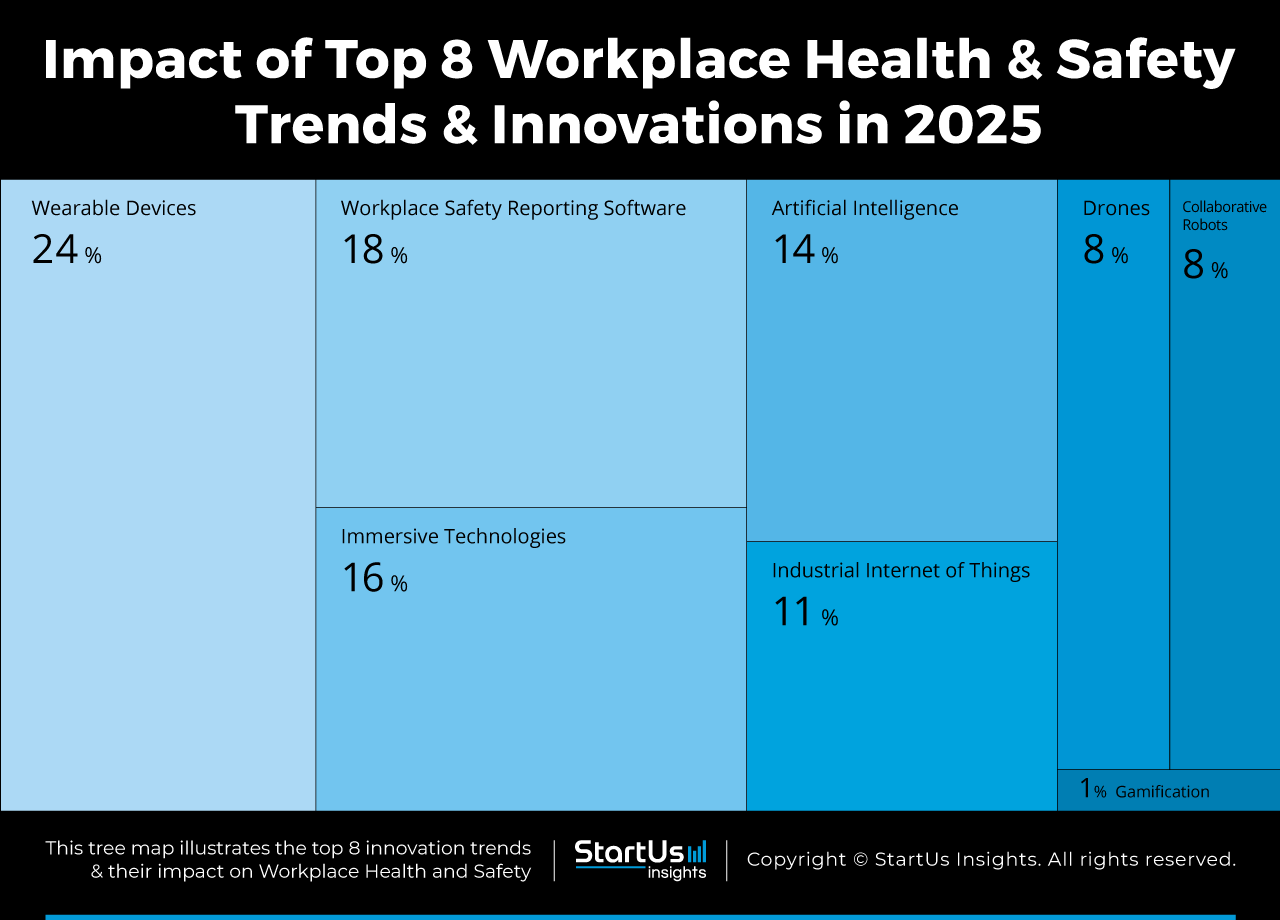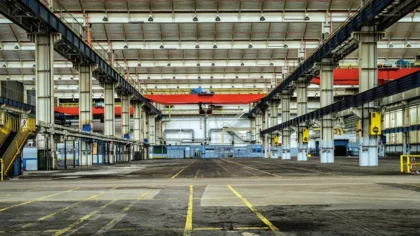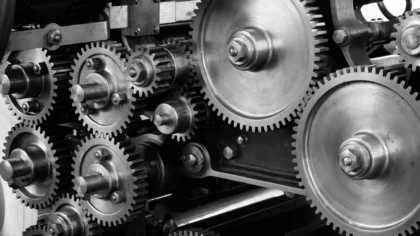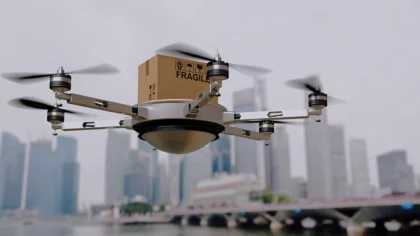From the standard office space to complex, outdoor sites, employees are susceptible to various occupational hazards. It is the duty of the employer to provide a work environment free from injuries and accidents to ensure employees are satisfied and productive. Awareness of unsafe activities and practices is primary in setting up such an incident-free workplace. Innovations in digital technologies provide organizations with a number of tools that ensure every employee is knowledgeable in safety precautions.
Further, preventive measures and identification of vulnerabilities in infrastructure and processes also play an important role in avoiding accidents. This has led to the rise of assistive and predictive technologies that aid better decision-making at an individual as well as the organizational level to improve safety.
This article was last updated in July 2024.
Innovation Map outlines the Top 8 Workplace Health and Safety Trends & 16 Promising Startups
For this in-depth research on the Top Workplace Health and Safety Trends & Startups, we analyzed a sample of 2 090 global startups and scaleups. The result of this research is data-driven innovation intelligence that improves strategic decision-making by giving you an overview of emerging technologies & startups in the workplace safety industry. These insights are derived by working with our Big Data & Artificial Intelligence-powered StartUs Insights Discovery Platform, covering 4.7M+ startups & scaleups globally. As the world’s largest resource for data on emerging companies, the SaaS platform enables you to identify relevant startups, emerging technologies & future industry trends quickly & exhaustively.
In the Innovation Map below, you get an overview of the Top 8 Workplace Health and Safety Trends & Innovations that impact 2 000+ companies worldwide. Moreover, the Workplace Health and Safety Innovation Map reveals 16 hand-picked startups, all working on emerging technologies that advance their field.
Top 8 Workplace Health and Safety Trends
- Wearable Devices
- Workplace Safety Reporting Software
- Immersive Technologies
- Artificial Intelligence
- Industrial Internet of Things
- Drones
- Collaborative Robots
- Gamification
Want to explore all Workplace Health and Safety innovations & trends?
Tree Map reveals the Impact of the Top 8 Workplace Health and Safety Trends
Based on the Innovation Map, the Treemap below illustrates the impact of the top 8 workplace safety trends in 2025. Wearable devices come to the top of safety innovations aiding in employee monitoring and work assistance. The rise of cloud and application programming interfaces (APIs) development has led to a boom in web-based software and mobile applications. These software tools aid organizations to bring all safety data under a single umbrella. Further immersive technologies and gamification simplify the learning and training processes and give a new perspective to employees. The use of artificial intelligence (AI) and the industrial internet of things (IIoT) for safety solutions facilitates the early detection and prediction of anomalies that lead to accidents. Finally, drones and collaborative robots avoid the exposure of humans to hazardous situations, eliminating human presence in high-risk environments.
Global Startup Heat Map covers 2 090 Workplace Health and Safety Startups & Scaleups
The Global Startup Heat Map below highlights the global distribution of the 2 000+ exemplary startups & scaleups that we analyzed for this research. Created through the StartUs Insights Discovery Platform, the Heat Map reveals that Europe and the US see the most startup activity.
Below, you get to meet 16 out of these 2 090 promising startups & scaleups as well as the solutions they develop. These 16 workplace safety startups are hand-picked based on criteria such as founding year, location, funding raised, and more. Depending on your specific needs, your top picks might look entirely different.
Top Workplace Safety Trends for 2022
1. Wearable Devices
Personal protective equipment (PPE) is a vital part of employee safety apparel. These protective articles serve as the first line of defense in the event of an incident. Innovations in wearable technologies and the miniaturization of sensors have allowed safety tech startups and scaleups to convert PPE into smart devices. These smart PPE are capable of monitoring the condition of both the employee and their surroundings. They are also equipped with a panic button that is manually or automatically triggered when a fall or accident is detected. Other innovations in wearables have led to the development of exoskeletons that assist workers in tasks like lifting, climbing, and prolonged standing. Apart from these industrial solutions some startups also focus on wearable solutions for office environments that monitor employees’ vital signs and keep track of their health. This workplace safety trend thus provides organizations with real-time health and safety information about employees working in various locations.
Verve Motion offers Lift-assistance Wearables
US-based startup Verve Motion develops a wearable robotic device for workers involved in lifting and transferring activities. The SafeLift Suit is the startup’s soft and light-powered exosuit that wears like a backpack. The suit offers up to 240 Newtons of lift force assistance, taking 40% of the strain off the worker with every lift. It is also equipped with advanced movement analytics with wireless connectivity and an intuitive control system that allows for customization of user and work activities. The solution directly reduces injury rates, giving rise to better worker experience, and ensuring higher retention.
SolusGuard provides Wearable Panic Buttons
Canadian startup SolusGuard provides a wearable panic button for lone workers. A quick press of the startup’s panic button triggers the SolusGuard Mobile workplace safety app to alert a network of emergency contacts. This avoids the need for workers to unlock phones, open an app or make a call in high-risk situations. In addition, SolusGuard’s patented failsafe technology triggers emergency calls even if the employee’s phone is closed or unavailable. This offers an advantage over other panic buttons, facilitating a quicker response before the situation escalates.
2. Workplace Safety Reporting Software
Communication is very important in the efficient operation of a safety management system. Traditional practices involving paper and spreadsheets lead to repetitive and mundane tasks even for the reporting of a minor safety incident. Moreover, the lack of a live self-updating dashboard might overlook certain data that is impossible to salvage from the manually entered documents. Digital innovations driven by new cloud computing and API development techniques led to the introduction of safety reporting software that automates safety management tasks. Web-based software and mobile apps aid in work permit management, incident management, safety compliance, employee risk management, and audit management. The smooth execution of these activities improves the transparency of safety concerns in the workplace. Further aids the generation of actionable insights on safety processes.
Resilienci monitors Workforce Resilience
US-based startup Resilienci offers a workforce safety platform that monitors and manages enterprise resilience across workforces, workplaces, facilities, and supply chains. Roamwell is the startup’s platform that offers mobile as well as software as a service (SaaS) solutions to enable smart and safer movement of the workforce in a pandemic situation. The platform assigns a personal risk index to each employee based on their movement. These indices provide the leadership and operations team suggestions to manage business disruption risk. The platform also maintains a dynamic dashboard to visualize operation threats and avoid disruption to mission-critical functions.
Odin offers Workforce Risk Management
US-based startup Odin provides a fully integrated software solution that manages workforce risk on enterprise-scale construction sites. The startup’s platform automates compliance and bookkeeping, digitizes worker and contractor records, and makes incident reporting paperless. The automatic compliance feature ensures that only qualified workers are allowed on the job site, thereby lowering safety risks. This saves time by avoiding mundane tasks and allows site managers to focus on tasks that add value to the company.
3. Immersive Technologies
Safety instructions and training activities involve the sharing of knowledge that guides employees on how to proceed safely through their daily activities. A theoretical explanation of do’s and don’ts stand the risk of omissions and commissions due to a lack of practical understanding. Immersive technologies like virtual reality (VR) and augmented reality (AR) provide organizations with a visualization tool that drastically improves the effectiveness of safety training. A fully immersive experience helps the employee to understand the intent of each precautionary action. This facilitates a change in the mindset of employees, perceiving safety regulations as essential to their personal safety rather than a mandate forced up by the organization. AR technologies also allow the embedding of safety warnings and instructions in the workplace, which simplifies collaborative work and personnel changes. This workplace safety trend in this way improves employee vigilance and avoids resistance to accepting new safety regulations.
WeBoard allows Work Environment Simulations
Czech startup WeBoard develops a training ecosystem that improves the quality and performance of employees with the aid of immersive digital media. The startup creates training sessions by combining advanced machine learning models and virtual reality. The simulated reality of the work environment allows workers to perform specific work procedures abiding by safety regulations. WeDash is the startup’s cloud platform that tracks the training performance of each employee in real time. The solution while making employee training more engaging, helps organizations achieve their safety training goals autonomously.
Aidar develops Employee Competencies
Polish startup AIDAR provides a VR and AR-powered platform that supports effective employee training and allows the transfer of competencies to remote places. The platform creates a digital twin of the training station and transfers tangible production processes into virtual reality. The employee then performs the task safely and without physical risk and is evaluated for feedback. The solution in this way builds employee competencies efficiently and safely.
4. Artificial Intelligence
Every accident is the result of a chain of events, culminating in damage to infrastructure, injury, or even death. With the digitalization of workplaces, organizations have access to a multitude of data that is able to represent the state of a work environment at each moment. This data includes environment sensor data, employee logs, equipment sensor data, and even surveillance images. Developments in AI provide solutions that derive insights from these data sets that improve the safety of workplaces. These solutions use machine learning (ML) algorithms on historical data to recognize patterns that serve as a reference to detect anomalies that might lead to accidents. The workplace safety trend thus facilitates the early identification of safety threats and also predicts catastrophic failures, allowing maintenance managers to take proactive actions like preventive maintenance.
Protex AI makes Proactive Safety Decisions
Irish startup Protex AI builds a platform that aids enterprise environmental, health, and safety (EHS) teams to make proactive safety decisions. The startup provides a vision processing box that connects to CCTV cameras to capture unsafe events in a specific work environment. The platform allows users to define unsafe events and customize risk and danger factors in their facility. Further, Protex’s storyboard functionality allows EHS teams to collaborate on learnings from safety events and implement corrective actions.
ArmourSense predicts Hazardous Situations
Israeli startup ArmourSense develops a video analysis software solution that leverages existing video cameras and AI for safety monitoring. It predicts and reduces risks to people’s safety, improves work efficiency, and reduces downtime costs. The solution identifies and predicts hazardous situations and alerts in advance, protecting workers and eliminating accidents before they occur. The software is capable of detecting unsafe actions related to forklift movements, production line operations, and PPE compliance.
5. Industrial Internet of Things
The monitoring of workplace safety in a vast workplace like a factory or a mine is a challenge. Even in a small workplace like an office manual monitoring of hazardous conditions is not the ideal solution. IIoT innovations have led to solutions like smart sensors and devices that are capable of continuously monitoring their surroundings and infrastructure. These devices include hazardous material sensors that assess the levels of toxic gases, and equipment monitoring devices that capture various machine parameters that indicate the equipment’s condition. This workplace safety trend provides real-time data that allows safety engineers and managers to rapidly identify any issues that might lead to a potential hazard.
VOS Systems ensures Safety Protocols
US-based startup VOS Systems builds scalable IoT-enabled solutions that improve people’s safety and workplace productivity. CoRe is the startup’s platform that enables the real-time flow of data from employees, equipment, tools, and assets to the analytics engine. The platform utilizes 5G-enabled sensors to collect this data. CoRe’s user-friendly interface generates insight and data-driven results that ensure safety protocols are met, maximize return on investment (ROI), and avoid losses due to unplanned failures.
SmartNanotubes enables Hazardous Gas Detection
German startup SmartNanotubes develops a multi-channel gas detection platform that avoids gas leaks and fires by identifying smells. The startup’s electronic nose solution is a multichannel gas detector chip with fine-tuned nanomaterials. The nanomaterials make the chip highly sensitive, energy-efficient, and compact. SmartNanotubes’s solution supports IIoT integration and allows the detection of harmful gases at a very early stage by the 24/7 monitoring of potential leakage points. The IIoT integration allows the triggering of alarms, preventing employees from being exposed to the toxic effects of the gas
6. Drones
Even when sensors and detectors are in place certain workplaces require visual inspection to ensure assets are operating within the safety codes. In facilities like oil and gas plants, power plants, construction sites, mines, and utility grids the functional parameters captured by sensors do not paint the complete picture. Visual inspection of huge storage tanks, transmission lines and other infrastructure expose workers to the risk of fall and other injuries. Here remotely controlled or autonomous drones and unmanned aerial vehicles (UAV) provide these workplaces with a safer alternative. Drones mounted with cameras and other essential equipment collect safety critical metrics accurately, removing the possibility of human error. This workplace safety trend also includes drone innovations that improve flight maneuverability allowing the inspection of difficult-to-reach locations.
FieldRobotix facilitates Autonomous Site Inspections
Swedish startup FieldRobotix offers fully autonomous drones for accurate and reliable data capturing. The startup’s design uses a modular approach allowing fitment of sensor combinations as per requirement. These drones also do not require fixed infrastructure, radio connection, or previous pilot experience. It is useful in the inspection of workplaces like underground mines, and heavy industrial setups. The solution overcomes the shortcomings of manual inspections and estimations providing an accurate picture of restricted areas and confined spaces. This reduces downtime, inspection time, and employee risks.
Dronomy enables Remote Inspections
Spanish startup Dronomy offers autonomous drone solutions that facilitate indoor and outdoor inspections. The startup’s proprietary positioning technology provides centimeter accuracy in both indoor and outdoor operations executing flights seamlessly with GPS, visual makers, or radio beacons. The drone is easily integrable with visible/IR cameras and other sensor payloads, to execute autonomous inspections at high altitudes and in complex, dirty, and dangerous environments. This aids the remote inspection of assets and infrastructure without exposing the employees to hazardous environments.
7. Collaborative Robots
The best safety precaution is to prevent activities that are hazardous whether it is immediate injury or long-term ailments. A collaborative robot is a workplace innovation that allows employees to minimize their effort in high-risk lifting activities and other material handling activities. Robots aid employees by doing heavier or more risky lifts. This prevents back injuries and other types of accidents. It also avoids the presence of humans in hazardous areas with dust, chemical, and extreme heat. Apart from manufacturing and warehouse applications the cobots are beneficial to healthcare environments to lift patients or for movements in hotels. The workplace safety trend thus reduces ergonomic hazards by decreasing repetitive tasks.
WorkFar Robotics develops Teleoperated Robots
US startup WorkFar Robotics creates Avatar Robots, a teleoperated robotic system for hazardous industrial environments. These robots integrate AI, machine learning, and computer vision to predict and optimize their movements and paths. For example, an Avatar Robot replaces human drivers in vehicle crash testing scenarios and enables remote execution of tasks within furnaces, power plants, laboratories, and other challenging settings.
Safetics ensures Collaborative Robot Safety
Korean startup Safetics offers a collaborative robot process design-analysis platform that ensures cobots are safe to work alongside humans. The startup’s platform allows designers and engineers to optimize the collision safety analysis function of the robot using AI and a library-based design function. Safetics’ web-based user interface allows users to implement processes without the installation of additional software. The startup in this way enables designers and engineers to ensure the implementation of new process concepts without disrupting safety features.
8. Gamification
Safety training and other related activities require employees to pass certain evaluations to ensure minimum knowledge of standard operating procedures (SOP) and safety standards. Gamification adds an element of competition, reward, challenge, and social engagement to these safety obligations making them more engaging. Although gamification adds an element of fun it does not eliminate the seriousness of the topics of health and safety. It introduces the topics in a way that facilitates interest in employees, especially in the case of repetitive material. This workplace safety trend provides organizations with the tools to improve employee attention.
TrainBeyond offers Gamified Safety Training
US-based startup TrainBeyond offers VR, desktop, and mobile-based safety training solutions with the current safety standards. The training platform allows employees to get trained from anywhere and at any time. The training sessions consist of real scenarios without real-life risks. The gamified structure of the sessions increases employee engagement and retention.
Sustify creates Engaging Safety Courses
German startup Sustify provides a micro-learning platform that enables factories to improve the skills and knowledge of their workers. The startup’s measurable and scalable eLearning platform offers courses on topics like fire protection and occupational health and safety (OSH). The platform’s sessions are in the form of games with each game providing the workers with certain safety measures and tips. The gamified version of the training engages the workers, with rewards and challenges urging them to finish the courses.
Discover all Workplace Health and Safety Trends, Technologies & Startups
Workplace safety innovations eliminate hazardous conditions and unsafe processes. Innovative wearable devices continuously monitor employees and their surroundings for hazards that if detected calls for immediate response and rectification. Safety management and Immersive technologies facilitate proper compliance with safety instructions and standards. AI and IIoT solutions serve as watchdog systems that monitor every anomaly in the facility allowing engineers and managers to take corrective actions at the right moment. Finally, drones and cobots allow employees to remain far from hazardous conditions removing the risk factor that humans bring to the table.
The Workplace Health and Safety Trends & Startups outlined in this report only scratch the surface of trends that we identified during our data-driven innovation and startup scouting process. Among others, cobots, exosuits, and augmented reality will transform the sector as we know it today. Identifying new opportunities and emerging technologies to implement into your business goes a long way in gaining a competitive advantage. Get in touch to easily and exhaustively scout startups, technologies & trends that matter to you!
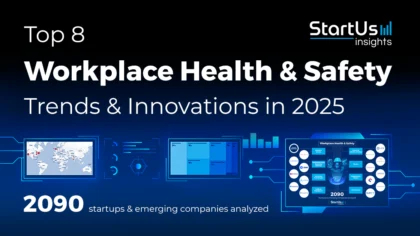

 WATCH THE VIDEO VERSION
WATCH THE VIDEO VERSION 